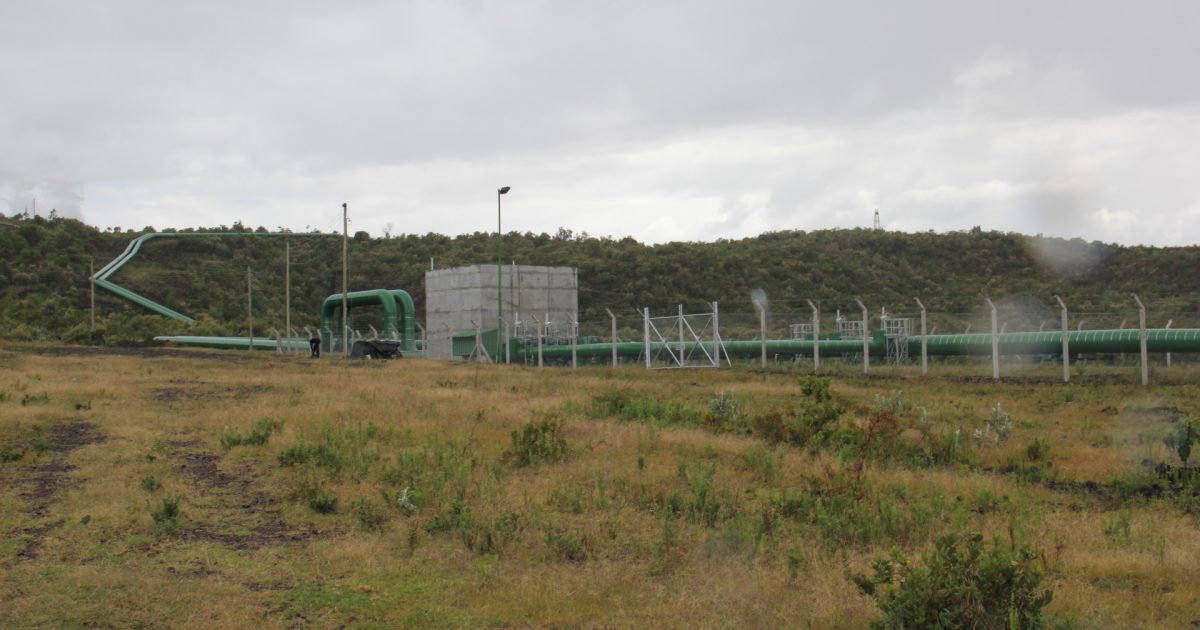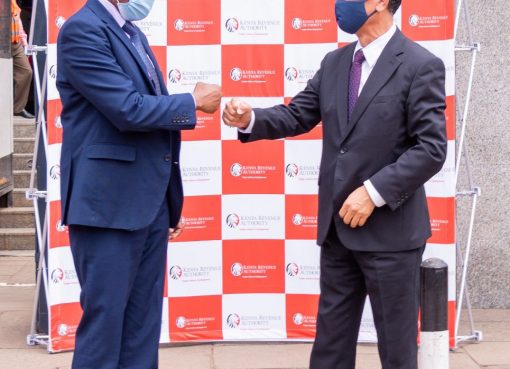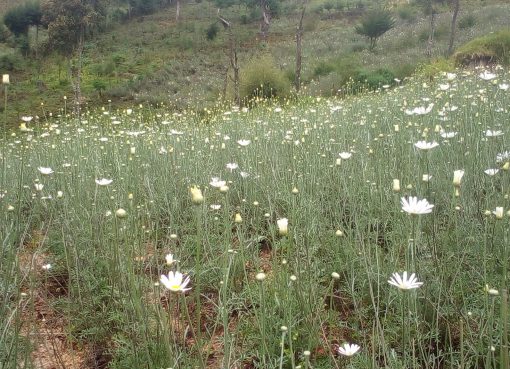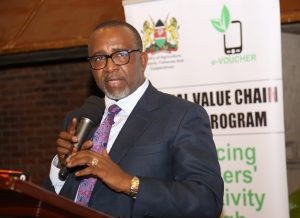Kenyans are inching closer to getting lower power bills as an Independent Power Producer (IPP) starts generating geothermal power before the end of the year from steam wells drilled by the State owned Geothermal Development Company (GDC) on the floor of Menengai Crater in Nakuru.
Sosian Menengai Geothermal Power which starts operations in December this year is one of the three independent power generating entities that GDC awarded exclusive rights to set up steam plants under a build-own-operate model.
The IPP alongside, Quantum Power East Africa and OrPowerTwenty Two Company had been contracted in 2013 through competitive bidding to build, operate and own the first three power plants in Menengai, each generating 35 Mega Watts to pump into the national grid a cumulative 105 Mega Watts.
GDC Regional Manager John Lang’at said entry of Sosian Menengai Geothermal Company into electricity generation is expected to yield a significant drop in power tariffs and in turn attract more investors locally and regionally as they would have a huge saving on energy, creating employment opportunities. He observed that prices of various value added commodities would drop drastically.
Speaking after conducting a team from Japan International Cooperation (JICA) led by Special advisor to JICA Mihara Asahiko on a fact finding mission on GDC installations and wells in Rift Valley Region, Langat noted that once the three IPPs are fully operational, electricity generated from the multibillion-shilling Menengai Geothermal Project would cost at least Sh7 per kilowatt less than diesel or hydro power.
Sosian Menengai Geothermal Power was initially scheduled to start operations by September last year after receiving Sh6.5 billion funding from the China-based Zhejiang Kaishan Compressor to construct a geothermal power plant. The two parties further entered into a 14-year Sh1.8 billion operations and maintenance of systems agreement.
The IPP will now pay GDC Sh1.7 billion per year for the next 25 years before eventually handing over the plant to the government.
Menengai phase one is part of a 5,000 MegaWatt project by the government to produce affordable, reliable and green energy.
The State Corporation has drilled steam wells with an output of 165 Mega Watts. This steam is more than enough for the first 105MW of electricity expected to be generated by the three IPPs.
GDC has already constructed the steam gathering system while Kenya Electricity Transmission Company (Ketraco) has set up a 132 kilovolt (kV) substation that will transmit electricity from the three power plants.
Under the arrangement, also known as Menengai Model, GDC was to take care of upfront risks and then invite private sector players to construct, own and operate the plants for 25 years.
“When electricity is finally generated at Menengai, our country will save more than Sh13 billion as fuel levy annually and ultimately lower the cost of power bills,” said the Regional Manager, adding that Kenya would save some Sh45 billion spent on buying diesel.
Quantum Power East Africa was the first of the three IPPs to receive a letter of support from the Government for the construction of the 35MW power plant. The IPP has started developing its plant at a cost of Sh8.2 billion. The African Development Bank will provide Sh4.03 billion ($40m) to Quantam.OrPower22 – is strategizing to attain financial closure with financiers
Lang’at said the Menengai GDC plant has the capacity to produce enough electricity to serve almost 500,000 homesteads and 300,000 businesses.
He added, “We are proposing to have industrial parks adjacent to our power plants. They will benefit from our tariffs, which will be the lowest at US $7 cents per kWh. The industries will also utilize the readily available geothermal steam for processing at very competitive rates. I am of the strongest conviction that our efforts at GDC are going to be a major boost to the Big 4 Agenda.”
The company begun drilling at Menengai site in February 2011 and has so far sunk over 43 wells, 24 of which have been tested giving 165 MW. The rest of the wells are still undergoing tests.
According to the Regional Manager GDC plans to pump an extra 1065mw into the national grid in the next ten years which will be generated from Menengai (465 Mega Watts), Baringo-Silale (300 MegaWatts) and 300 Megawatts from South Rift region as the government seeks more geothermal energy.
“Geothermal energy will be critical on all the fronts because of its affordability. But critically, geothermal energy will drive the agenda of food security and manufacturing. GDC is banking on mining heat from steam to support manufacturing and food security,” noted the regional boss.
Langat stated that as IPPS generated electricity, GDC would continue to promote and implement other direct uses of geothermal steam.
With a proven potential of 7,000 megawatts, geothermal energy from Kenya’s geologically active Great Rift Valley forms the cornerstone of a government scheme to boost energy production.
The Regional manager disclosed that the State Corporation had commenced the second phase of drilling wells at the Menengai Crater floor targeting an additional 60 Mega Watts.
In its efforts to enhance the geothermal development activities in Kenya, Asahiko stated that JICA would continue supporting the Capacity Strengthening Programme of GDC.
“This technical assistance will improve GDC’s capacity as well as enhance capacity to prepare economically and environmentally viable business plans,” said Asahiko
He also highlighted Japan’s continued support for geothermal energy development in Africa, also in the form of technical support.
Records from the Ministry of Energy indicate that geothermal energy is the leading contributor of power to the national grid, accounting for 44.12 percent followed by hydropower at 26.98 percent. Thermal is below 13 percent. This is in contrast to 2014 when the share of thermal was at a high of 34.49 percent due to erratic rains that reduced hydropower sources.
Kenya has been deepening supply of power from cheaper sources such as wind and steam. This is expected to translate to reduced power bills for consumers.
Data from the Energy and Petroleum Regulatory Authority shows that geothermal is the biggest contributor of power to the national grid, accounting for 44.12 percent of the total supply.
According to the Renewables Global Status 2018, Kenya tops in Africa with 700 megawatts (MW) of geothermal power, retaining its place compared to last year.
The US has the largest geothermal generating capacity with 2,500 megawatts followed by the Philippines (1,900 MW), Indonesia (1,800 MW), Turkey (1,100 MW), New Zealand (1000 MW), Mexico (900 MW), Italy (800 MW) and Iceland (750 MW).
Kenya beats technological heavyweight Japan which has been ranked tenth with an output of 500 MW.
The rest of the world shares 950 MW. Ethiopia is the only other African country with developed geothermal energy (7 MW).
Geothermal is widely considered a preferable, low-cost renewable energy source due to low emissions when compared to thermal sources.
It is also cheaper than thermal power when used as an alternative to mitigate depressed hydropower generation due to drought. Kenya has a target of 5 gigawatts (GW) geothermal capacity by the year 2030.
Green energy power plants under development in Kenya include the 300 MW Lake Turkana Wind Power Plant, which is the single largest wind power plant in Africa, the 70 MW Olkaria 1 and the 140 MW OlKaria V.
By Anne Mwale





